More and more people go on camping trips. Today we’ll talk about the tent vestibule, a certainly useful function.

The benefits and value of a tent vestibule
A tent vestibule is a covered area outside the main tent body and is essentially an awning for your tent. It extends off the front of your tent to help protect you from the stormy and hot weather.
Tent vestibules are also an additional place to store camping gear. This is useful if you are limited in storage space.
The tent vestibules will also extend along the ground and sides. They serve as an addition to your camping tent and can often be closed, which gets to you an additional mobility advantage. Thus, the tent with a vestibule prevents dirt from entering the tent.
Let’s take a closer look at what is a tent vestibule.
What is tent vestibule used for?
Awning tents have three essential ways to use:
- as a transition area;
- as a gear storage space;
- as a temporary cooking area.
Let’s take a closer look:
- Be weatherproof. If it is wet rainy weather outside, the first thing to do is to drain the rainwater from the body, and only then go into a dry tent. Shoes can be stored in the additional vestibule at the footprint area. This will help keep your feet dry. Moreover, some tents are large.
- To have extra storage space. A tent with a vestibule comes with a gear loft that allows you to store your camping gear in a protected space. Tents designed with a vestibule area allow for optimal use of covered space for sleeping and storage. Some tents are also designed with an alternative rain fly.
- To cook safely. The tent vestibule will rescue you in cold and windy weather. Although the vestibule tent is covered, it does not affect the ventilation that is perfect for outdoor cooking. Be aware of the risk of carbon monoxide poisoning and keep a distance between the stove burner and the tent fabric.

What are the types of vestibules
Shapes, sizes, types, and even colors vary depending on the types. The size of a tent vestibule depends on the specific tent model.
In addition, the shape of the vestibule highly depends on the footprint area and the overall volume. For example, a backpacking tent can reach 25+ square feet. Let’s look at the main types of tent vestibules.
Front vestibule
Front vestibules are structures that are installed at the front door of the tent. These tent’s vestibules depend on their size in different tent models, and usually, they are bought with a 1-person tent.
The vestibule won’t take up much space, includes a cooking area, and lets to store your gear.
The front vestibule is perhaps the best-selling type of tent vestibule: they are lightweight due to the single vestibule, have enough space inside, save from harsh weather and go as a great addition to car camping.
I do not recommend using add-on options, they are often heavy and not handy.
Side vestibules
These vestibules are based on the longer end of your tent. Side vestibules have more space. You can store your gear and still have enough space for transition.
The side vestibules need more space for storing gear, and they are too big for a solo camper. Moreover, their center height can reach high options.
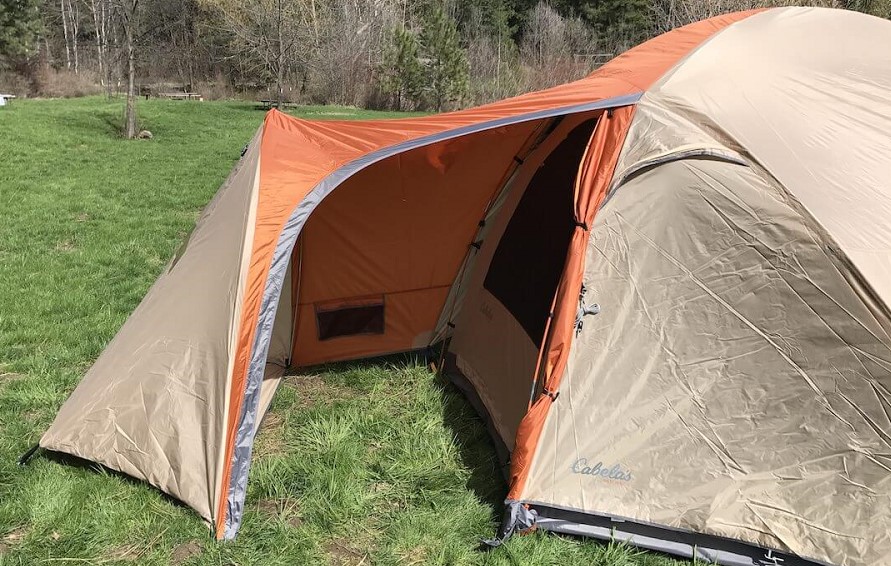
Side or front tent vestibule
The first one is more common. Especially, 2-person tent is in demand. Although the front vestibule creates additional space, it can block the tent entrance due to the extra storage space.
Side tents can be more helpful. They allow additional space on either side because of the two doors. But a tent with two vestibules would be a win-win.
Zipper tent vestibule
A zipper tent with a vestibule is much simpler to use, but that doesn’t change its value. In fact, they affect quite similar purposes as described above tents. They attach to the main tent body and protrude outwards to provide a shaded area.
Over against the tent vestibule, these types of tents don’t provide a fully covered area because they are open from both sides.
Furthermore, they will not be useful for winter camping and won’t protect you from bad weather.
Nevertheless, they are good for an unplanned warm spring or summer camping trip. These tents are comfortable to sit and relax in. They provide a dimmed place and make cooking inside possible.
Another advantage of this vestibule design is the zipper on the awning. You can zip up or unzip the tent. This way, you will have a protected area to store your gear inside.
The good news is that despite their design, most tents can accommodate up to 12 people. Zipper tent vestibule, a more extended than the previous two types. This makes it more roomy.
Storage space and other pros of a tent vestibule
The most important thing is the absence of dirt in the tent. With a tent vestibule, you take your shoes off inside the awning tent.
When packing the tent, this will greatly ease its cleaning. Moreover, capacity. Can you imagine how much effort you can save on camping tent cleaning?
Some other pros of the vestibule tent are the extended storage space. The large vestibule tent can be up to 25 square feet (2.32 m²) in size. For example, a two-person backpacking tent can hold two 60-liter backpacks, a couple of day packs, and shoes.
You can also store a cooler or cooking equipment in the tent with a vestibule. This leaves space inside the tent.
Although the tent vestibule is designed to protect you from weather elements, some experts advise not to store anything in the tent with a vestibule that could get wet.
Since the camping tent serves as an additional front door, there is little chance of water getting in. Anyway, a rain fly won’t let you and your things get wet catastrophically.
And another benefit is the power cord. For example, in a 6-person tent, this cord comes with storage pockets and a lantern hook. You will be able to keep things organized without any problems.
The E-port isn’t only in the 6-person tent. It can also be set up in a 2-person tent. Such a tent is usually equipped with color-coded poles, that make setting up of the tent easier.
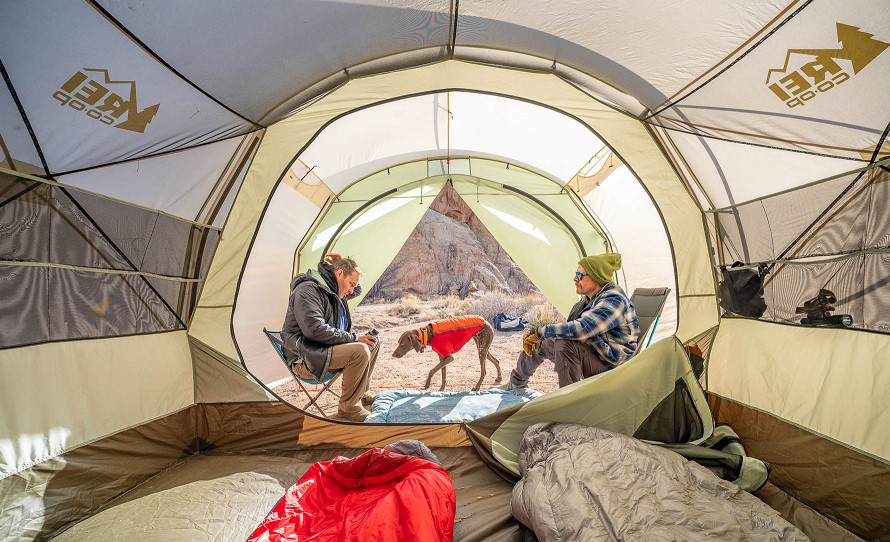
Cons of a tent vestibule
There truly aren’t many cons to having a tent vestibule. One of them is that the vestibules are in more functional tents. Buying a tent with one or more vestibules is a great idea, but not cheap.
Can you buy an extra vestibule for your tent? Yes, you can. But chances are that the add-on vestibule wouldn’t match your tent.
But depending on what features you want from your tent, you may be able to find a tent with a vestibule tent that is affordable. It can be a small tent with an add-on vestibule that has a rain fly.
Thus, you will receive additional protection from the rain, cook inside, and store things, and other gear. The rain fly is an essential thing that brings comfort in camping.
Remember that most vestibules of this type are floorless. You should rely on the construction of your tent to hold them up.
For one person, the add-on vestibules are a fine alternative. But for a group of people and long hikes, tents with vestibules are recommended.
Do I need a vestibule in tent?
What is a tent vestibule for you? Decide on the type of camping:
- Backcountry Camping;
- Car Camping;
- Family Camping.
For the first type of camping, it is a good idea to buy a tent with one vestibule. Depending on the number of people, you can add money for a tent with several vestibules. Such tents have a lot of space and are suitable for many people. Furthermore, because of their functionality, they are suitable for winter.
A tent with a vestibule is not always required. You can use your car as a storage locker. But if you are going on a long trip, it is better to consider buying a tent with an awning.
A modern covered tent is safe and resistant to animals, too, so you don’t have to worry about damage to the structure by your pet.
A family or group tent is large and heavy. Inside the vestibule of the tent, there will be enough space for additional equipment. But in this case, you need to be more careful when buying.
The family tent is usually sold without a vestibule. Instead, the tent has a built-in internal storage area. They can be accessed from inside the tent.

What is tent vestibule made of?
And the last important point is the material of the tent. Camping material also depends on the type of camping.
Fabrics have their advantages and disadvantages too: some are lighter, some require less maintenance, and some are more breathable. The three most used materials are cotton, polyester, and poly-cotton.
Cotton tent
Cotton is considered the best fabric for a tent. It has a long lifespan, is waterproof (unlike synthetics, cotton absorbs water and swells, thereby preventing water from entering the fabric), and has high depreciation.
But at the same time, cotton is a maintenance material. The tent must be constantly cleaned and dried before packing. Keeping should be in a cool place.
Cotton is a great fabric for quality rest. But the cost of such a tent will be high.
On the other hand, this is the long live item, and you can resell such tents with vestibules with awnings for the same price.
Plus, cotton tents with vestibules usually have a long warranty. Consider this option, especially if you are a professional camper.
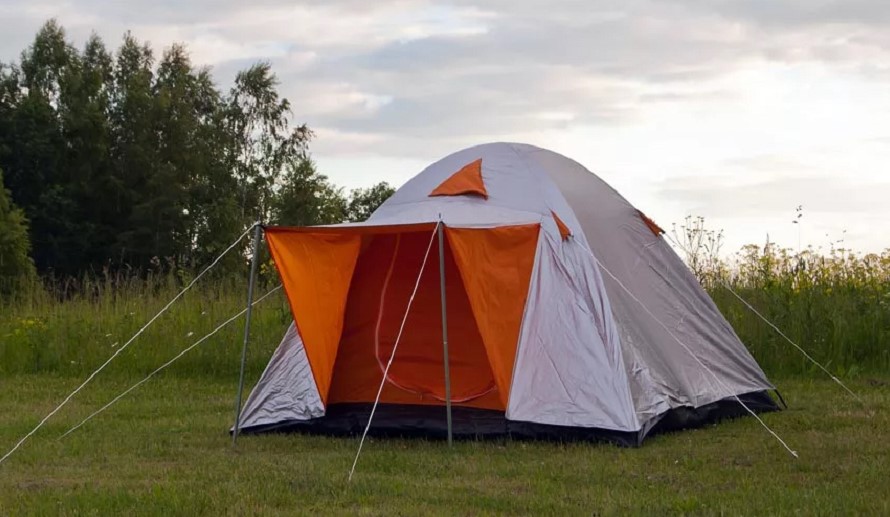
Polyester tent
Polyester is also waterproof. However, unlike cotton, the seams of a polyester tent are sealed to prevent water from entering. This means that water can neither enter the tent nor drain. Water vapor will persist inside the tent, forming condensation (for example, damp walls of the tent).
Furthermore, any synthetic fabric deteriorates from solar radiation. This is considered during production, but additional security must be provided, for example, with a tarpaulin. Cleaning the with a vestibule necessarily includes the use of a water-repellent. Otherwise, care is more difficult.
But the lightweight and small volume of such a tent are ideal for cases where you have a little area for transportation and storage.
Moreover, these tents are sold at an economical price. This is a great budget option for group and family trips. Even though some products need to be purchased, you can also find them at a budget price.
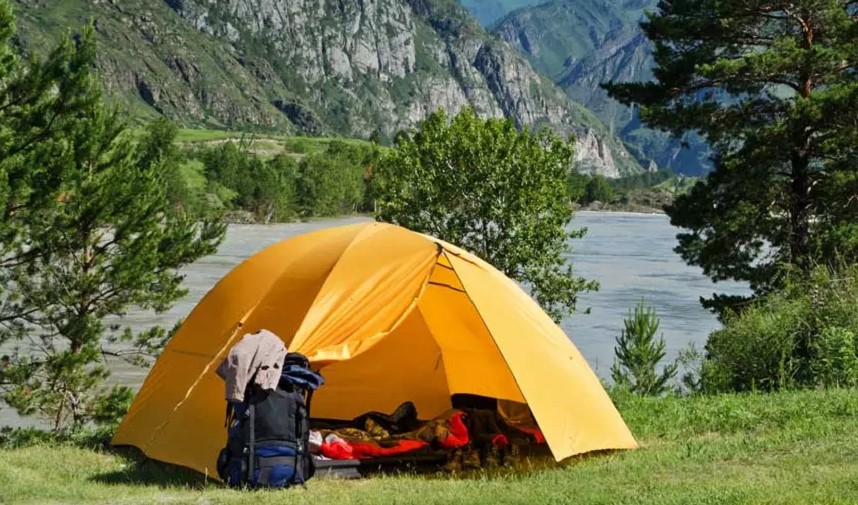
Poly-Cotton tents
This tent is halfway between polyester and cotton, and the fabric offers the best of both in terms of comfort and usability.
This is the best option for a covered tent.
As for the cost, the poly-cotton vestibule tent will be pricier than the previous two types, but by buying it, you can forget about problems and nuances for a very long time.
How do you make a tent vestibule?
It is really possible to make a vestibule for a tent on your own.
You will need special tools and materials:
- waterproof tarpaulin with grommets (6×8 or 8×10)
- a pack of pegs
- a roll of strong wax cord
- and a hammer
Now, here are the steps:
- Secure the pins to the back of the vestibule, and place it about 1/4 the length of the tent;
- Pass the cord through the tarp;
- Place the corner of the tarpaulin cord over the top of the tent;
- The back of the rear tarpon pegs on each side one by one;
- Then take two more pegs and stick them to the ground (when attaching the front pegs, consider the size of the tarp);
- At the last stage, insert the cord into the front eyelets and secure the front ends into the pegs.
Therefore, you have a handmade tent vestibule. It can be used as a shelter from wind, and rain, and as a cooking area. Follow the operation rules, as with purchased tents, so that your awning is used for a long time.
Summing Up
Tent vestibules are always beneficial. Especially if you are going to an area with potentially high rainfall. Furthermore, the center height of the vestibule and the area can reach high parameters, which provides space and additional storage space for supplies. The tent cover will keep your equipment from getting wet.
Moreover, a tent is useful if you are traveling in a group. The extra space and protection from dirt are nice nuances on long trips. One thing is for sure: a tent without its own vestibule is less comfortable than with one.
Additionally, in the commodity market, you can find low-cost models for your request. So, what is a tent vestibule suits you best?
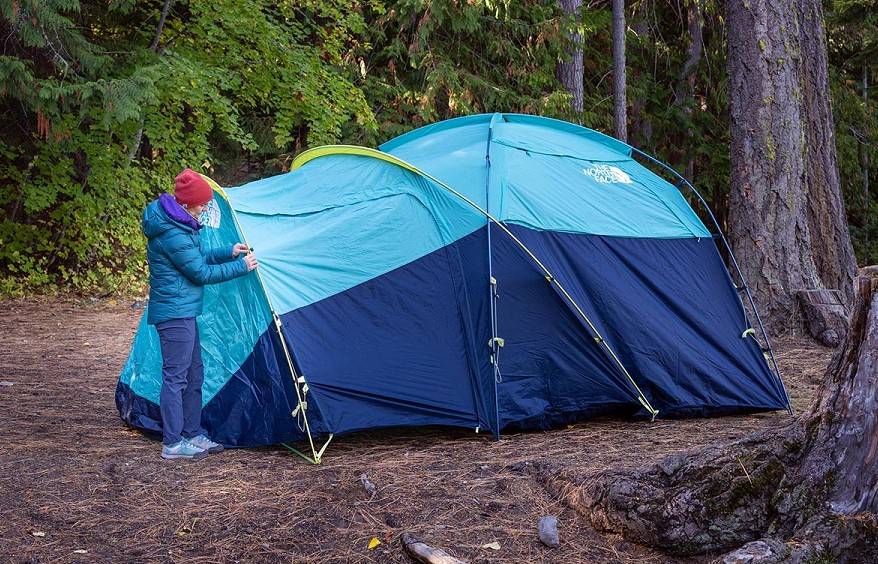

My name is Olivia Kellison. I have been camping with friends and on my own for a long time. For me, camping is a great way to escape everyday life’s chaos. I started this blog because I have always had a passion for the great outdoors, and here I am gladly sharing what I know with other outdoor enthusiasts. It does not matter whether you are an experienced adventurer, or just planning your first trip, my blog will be of great help to you.

